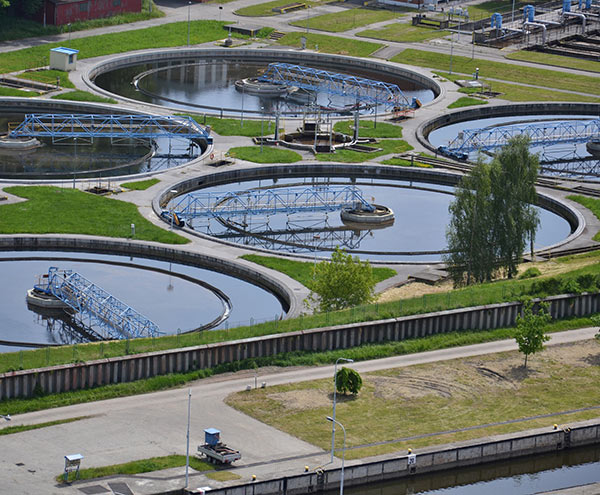Today’s blog is written by guest blogger, Sameer Moorji, Director, Applied Markets.

Even as countries are now gradually starting to reopen after lockdown, the COVID-19 pandemic is far from over. Researchers around the world continue to find new ways to monitor, prevent and treat the disease. One new way of monitoring COVID-19 outbreaks relies on a somewhat unexpected source: sewage water.
In March 2020, researchers at the KWR Water Research Institute found the presence of SARS CoV-2 RNA in wastewater samples collected near Schiphol airport in Amsterdam and several other sites in Netherlands. The result came within a week after the first case of COVID-19 in the country was confirmed. This study opened the door to the possibility of using wastewater-based epidemiology to determine population-wide infections of COVID-19.
What is Wastewater-based epidemiology?
Wastewater based epidemiology (WBE), or sewershed surveillance, is an approach using analysis of wastewater to identify presence of biologicals or chemicals relevant for public health monitoring. WBE is not new, as wastewater has previously been used to detect the presence of pharmaceutical or industrial waste, drug entities (including opioid abuse), viruses and potential emergence of super bugs. In fact, several countries have been successful in containing Polio and Hepatitis A outbreaks within their geographic locations.
Early Warning System for COVID-19 Outbreaks
Although WBE cannot identify which individuals have been infected, it has several advantages compared to patient testing. For example, it is much more cost-efficient in obtaining population-wide data. Another advantage is early detection. A study from China showed that SARS-CoV-2 RNA can be detected in human feces a few days to a week ahead of the onset of symptoms. This viral RNA eventually ends up in the sewage system. Another study by Yale University demonstrated that monitoring SARS-CoV-2 viral RNA concentration in sewage water can predict COVID-19 outbreaks 7 days before individual patient testing and 3 days before hospital admissions. The study concluded that WBE is a leading indicator to identify hotspots in a localized region or population. Therefore, WBE can serve as a low cost, early warning system to identify new outbreaks, trends in current outbreaks and prevalence of infections.
Wastewater surveillance data can complement increased clinical testing and enhanced contact tracing efforts within a population, informing public health officials to either take appropriate actions on containment or relax restrictions. In addition, regular monitoring can inform whether communities have effectively “flattened the curve” and when they can re-open from a lockdown. As a result, local officials can act promptly, balancing risks of a public health crisis versus business as usual, which is essential for local economic viability.
Protocol for Detecting Viruses in Wastewater
Research groups around the world are working diligently to optimize methods to effectively detect viral genetic material. Global initiatives led by the Water Research Foundation in North America and several other research institutions have launched their own efforts to develop a standardized protocol. A European initiative led by Sewers4Covid is another such effort where teams from Netherlands, Spain, Greece and UK have come together to develop new methods. A standardized method of detection that is widely adapted will be important for the success of this tool. Several institutions are also providing testing services for wastewater analysis and will be important players in mapping out new outbreaks.
Detection of viral material in wastewater begins by collecting samples in sewersheds, where water drains into a single point of the sewage system. The collected wastewater samples are pasteurized at 60°C to inactivate any live viruses. The virus is then concentrated using either a Polyethylene Glycol 8000 precipitation, centrifugal filtration or ultracentrifugation method. Extraction methods (manual, automated or high throughput) are then used to purify viral RNA from the concentrated viral material. Finally, the RNA is reverse transcribed to cDNA and amplified via quantitative PCR using primer sets for either nucleocapsid genes (N1/N2 published by the CDC), or Envelope genes (E). The results are then analyzed and compared with ongoing levels of viral load within the areas of collection.
How Promega Can Help
To support the need for wastewater testing, our scientists have tested reagents that support critical parts of the workflow. Luckily, we have decades of experience in developing nucleic acid purification and amplification chemistries. As a result, our scientific applications team has developed two protocols that includes guidance based on our experience with SARS CoV-2 sample prep methods and reagents. One uses PEG 8000 precipitation for viral concentration, and the other uses centrifugal filtration. We have also developed a sensitive, robust and specific RT-qPCR kit for detection of SARS CoV-2 in wastewater samples. As the research community learns more about this dynamic area of study, we are excited to support labs globally in their own efforts to optimize methods of detection. We are committed to providing reagents for COVID-19 testing and viral detection assays. Wastewater monitoring is another area we can help in proactively identifying and containing new outbreaks.
Learn more about methods and products for viral RNA detection in wastewater.
Related Posts
 Sameer Moorji is the Director of Applied Markets Business Unit at Promega. His team is responsible for the strategic direction and commercialization of differentiating technologies to serve the needs of customers in Agricultural sciences/Food technologies, Animal Health, Water testing and Cosmetics research. Sameer has held several positions since joining Promega in 2013, most recently as a Regional Sales Manager (2017-2019) and as a Sr. Client Support Specialist (2015-2017) supporting Life Science customers. Prior to joining Promega, Sameer spent over 10 years in Pharmaceutical drug discovery in the areas of Infectious diseases and Oncology. He graduated with a Bachelor of Science in Pharmacology and a Master of Business Administration in Finance. Sameer loves traveling, playing soccer and has developed a passion for the art of coffee brewing.
Sameer Moorji is the Director of Applied Markets Business Unit at Promega. His team is responsible for the strategic direction and commercialization of differentiating technologies to serve the needs of customers in Agricultural sciences/Food technologies, Animal Health, Water testing and Cosmetics research. Sameer has held several positions since joining Promega in 2013, most recently as a Regional Sales Manager (2017-2019) and as a Sr. Client Support Specialist (2015-2017) supporting Life Science customers. Prior to joining Promega, Sameer spent over 10 years in Pharmaceutical drug discovery in the areas of Infectious diseases and Oncology. He graduated with a Bachelor of Science in Pharmacology and a Master of Business Administration in Finance. Sameer loves traveling, playing soccer and has developed a passion for the art of coffee brewing.
Latest posts by Promega (see all)
- Overcoming qPCR Inhibitors: Strategies for Reliable Quantification - March 13, 2025
- Celebrating Creativity and Innovation: The 2025 Promega Employee Art Showcase - February 4, 2025
- Soft Skills for the Science Lab: Develop Yourself with Promega - November 14, 2024
